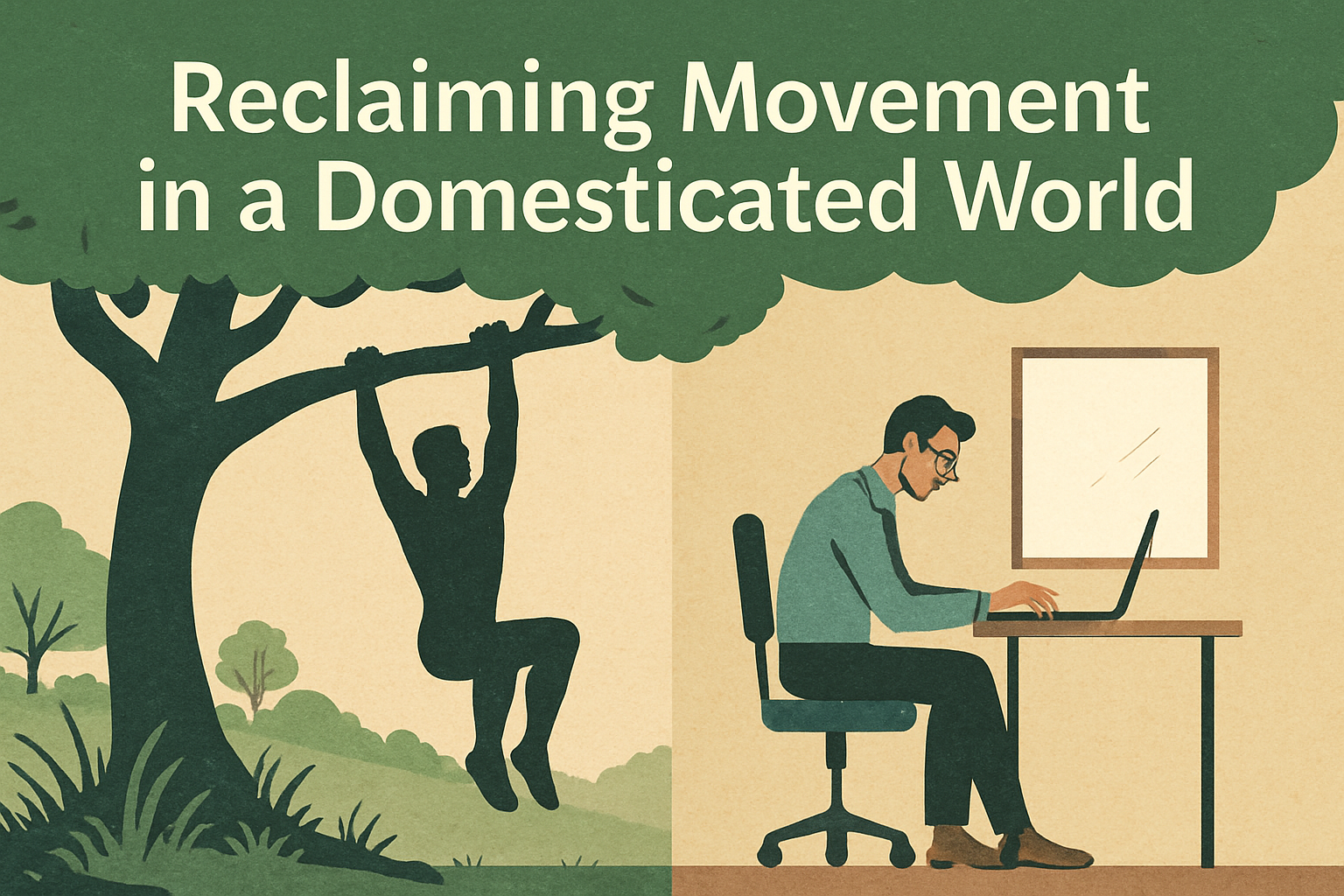Reclaiming Movement in a Domesticated World - Part One
The body was built to move. Stillness is the challenge. Movement is the solution.
Why People Come to TAOFit
Most people do not come to me when everything is fine. They come because something is not moving well. They feel stuck, frustrated, and in pain. They want relief.
This is where we begin. Not with a workout. With a conversation.
Life in a Domesticated World
Humans are born prepared for the wild. Our modern lives are domesticated, with paved sidewalks, comfortable chairs, cars, computers, and constant convenience.
In the wild, we would climb trees, crawl through brush, squat by the fire, and hang from branches. In modern life, we spend most of our time sitting, scrolling, and commuting. The body adapts to both, but only one keeps the joints alive.
No matter how “primal” someone tries to be, no one escapes the effects of a domesticated lifestyle.
Why Stillness Hurts
One byproduct of domestication is joint issues. Feet, hips, knees, shoulders, and the spine require regular, varied stress to stay functional. With too much stillness, they begin to break down.
My goal is for clients to build 60–120 minutes of intentional movement into their daily routine without disrupting their schedule.
This raises a question: how do you add one to two hours of movement without taking that time away from something else? To see the solution, we need to look at what stillness does to the body.
The body is efficient. When we sit for extended periods, the nervous system shifts into autopilot. The joints of the spine stack and compress into a stable, low-energy posture. The alert part of the nervous system goes off duty to conserve energy.
When sitting becomes a daily pattern, compression builds, and stuckness is harder to undo. Pain often appears at this stage, not because something is broken, but because something is not functioning correctly.
When the body stops responding, frustration follows. Highly compressed joints feel stiff and experience faster wear and tear. This can lead to arthritis, joint inflammation, and chronic pain.
Pain itself is not the problem. It is information — a signal that change is needed. It is an opportunity to listen, adjust, and move in a different direction.
This is where we take action. Frequent movement breaks prevent long hours in a compressed, energy-saving posture.
Movement is Nutrition
The answer starts with a shift in thinking: movement is nutrition.
How you move throughout the day is how your body receives its movement nutrition.
If you sit for five to eight hours, that is the equivalent of eating fast food all day. Going to the gym afterward helps, but it will not undo what came before.
This is where movement snacks matter. These are short, focused bursts of motion throughout the day. They act like micronutrients for your joints.
You do not need a gym. You need to interrupt stillness. Movement snacks fit into empty spaces, such as during transitions, between tasks, or whenever you move from one place to another.
Examples in practice:
Desk-bound: hip and spine mobility in your chair. The place you sit the most should also be the place you move the most.
At home: passive hanging for 30–60 seconds every time you pass a pull-up bar.
Building coordination: balance work such as standing clocks or walking on a 2x4.
Recovering or regaining strength: practicing getting up and down from the floor.
Every Little Bit Counts
It is the cumulative effect that becomes powerful, not one perfect session, but many small, consistent ones. Movement snacks are not the warm-up. They are the practice.
How I Help
This is why I coach the way I do. Not through punishment. Not through overwhelm. Through awareness, consistency, and daily practice.
It starts with one habit: a simple check-in with your body. A short sequence that develops skill and confidence over time.
In Part 2, I will show you exactly how we begin and why the first 30 days form the foundation for everything that follows.


